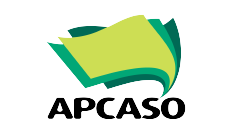
While significant changes in the Global Fund funding model made during the 2023-2025 Allocation Period created new spaces for community engagement in the funding architecture, these did not necessarily translate into full integration of CRG issues and interventions in funding requests or in funded activities.
As seen in the 2021 CRG Needs Assessment, the implementation of the Funding Model shows a landscape of gains, gaps, and challenges in addressing critical enablers and CRG issues in HIV, TB, and malaria programmes. Here’s a snapshot of community experiences and the results of efforts to include CRG interventions in Global Fund-supported programmes:
-
There is a general consensus that the information given to CSOs and community-led organisations are limited and that the development of the Funding Request is mostly led by the PR;
-
Community Systems Strengthening (CSS) activities are perceived to be somewhat included in the Funding Requests, however, it is a perceived that sustainability on CSS is only dependent to Global Fund. In one country, it was perceived that only big Principal Recipients (PRs) benefit CSS;
-
Funding requests are perceived to prioritize biomedical interventions than human rights interventions. While human rights activities are included, they are most of the times overlooked and not included in the core set of interventions in the Funding Requests;
-
Interventions to address gender-related issues are present, especially in HIV, and although somewhat limited in TB, these do not cover all genders. For instance, only specific interventions for female sex workers and transgender women are present, but not with other genders. With malaria, however, activities are mostly for general populations which invisibilized gender-specific issues;
-
Young people are generally not prioritized in the Funding Request process. Young key populations are also subsumed within ‘key populations’ that misses identification of specific interventions within these groups. Experience of TB and malaria sectors in working with young people remain very limited;
-
The struggle for inclusion of CLM interventions in Global Fund grant implementation is the lack of knowledge about CLM and the resistance of governments on the idea of CLM being community-led and its focus on accountability. This impacts the kind of CLM interventions that are included in the grant;
-
Given how community engagement in the FR development process has been tokenistic, the approach to work with civil society, key, and vulnerable populations have been limited based on closeness to capital and are sometimes limited;
-
Global Fund writing teams are limited from participation of civil society, community-led, and key population-led organisations. Teams are seen to be in the control of either the national disease programs or the PR, and civil society’s participation are more of a requirement of the Global Fund;
-
It is perceived that there is some level of inclusion in the different assessment activities such as in the oversight committee meetings and in the monitoring visits. However, in some focus groups, community representatives do not necessarily reflect those affected by the three diseases, thus perceived as tokenistic
Did you know that there are changes in the Funding Model processes, and that they reflect key population priorities, human rights, and gender equality? Read about the Funding Model Features by clicking here and the Funding Model process by clicking here.
